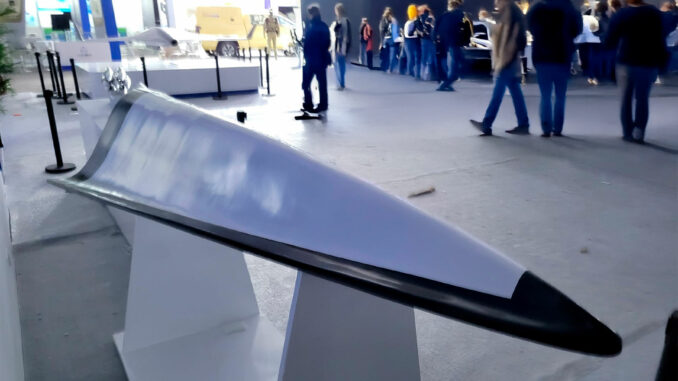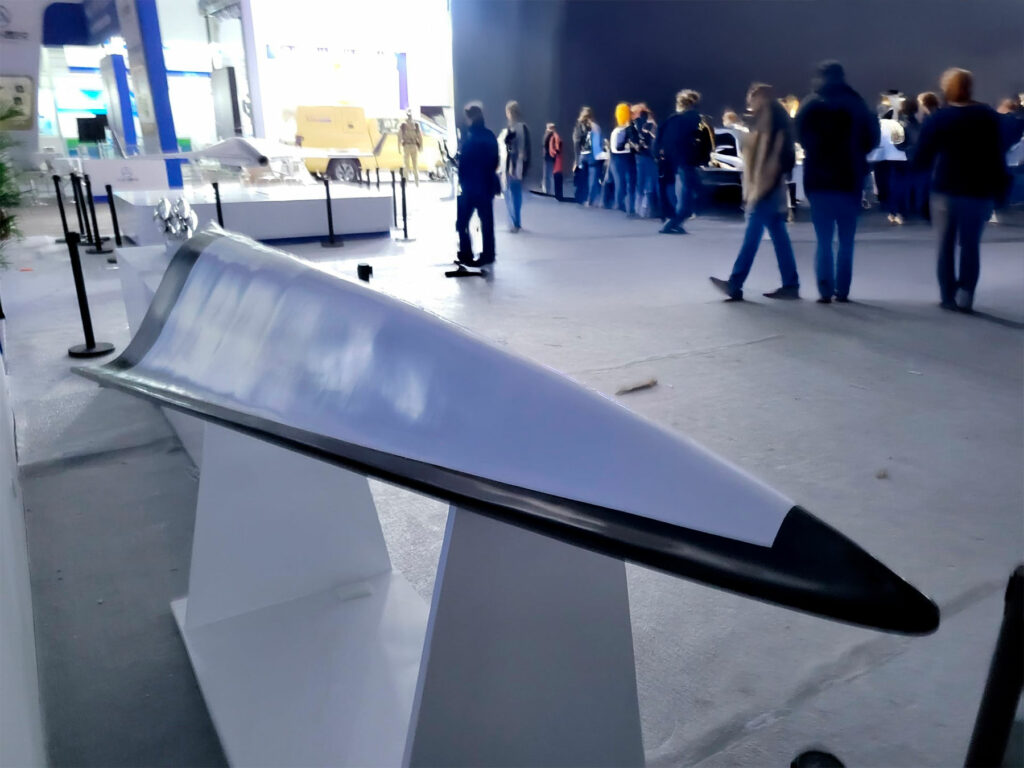
China’s GDF-600 concept promises advanced hypersonic capabilities with extended strategic potential thanks to a variety of submunitions.
The GDF-600 is an unpowered hypersonic weapon concept developed by the Guangdong Aerodynamic Research Academy (GARA). It integrates a variety of submunitions, such as missiles and drones, capable of kinetic strikes, reconnaissance and electronic warfare. With a speed of up to Mach 7 and a maximum range of 600 km, this vehicle can target several areas in a single flight, making defense more complex. Technological challenges remain, particularly for the deployment of submunitions at extreme speeds.
Design and technical features
The GDF-600 is an unpowered hypersonic boost-glide vehicle, capable of carrying up to 1,200 kg of payload in a wedge-shaped design. It reaches a maximum speed of Mach 7 (approx. 8,575 km/h) and a range of between 200 and 600 km, with a trajectory altitude of up to 40 km. These features give it enhanced mobility and the ability to evade conventional defense systems.
Payloads include five types of submunition, including supersonic and subsonic missiles, kamikaze drones and kinetic strike systems. For example, terminally released supersonic missiles can achieve an additional range of 500 km, almost doubling the weapon’s effective range.
Strategic and technological implications
This concept increases the challenges for missile defense systems. Hypersonic vehicles, like the GDF-600, follow shallow, unpredictable trajectories, reducing defenders’ reaction time. In addition, the ability to release complex submunitions, such as drones, expands tactical possibilities by enabling multiple strikes or electronic jamming operations.
However, there are technological constraints. Payload separation at hypersonic speeds generates significant thermal and mechanical stress. Drones, in particular, require sophisticated deceleration mechanisms to avoid being destroyed during deployment.

Comparison with global advances
China is investing heavily in hypersonic weapons, as demonstrated by its DF-17, already operational, and its recently tested orbital system. By comparison, US programs such as the AGM-183A ARRW and Dark Eagle are experiencing significant delays. These delays highlight a growing gap in the development of strategic hypersonic capabilities.
Evolutionary potential and geopolitical impact
According to GARA, the GDF-600 could be adapted to achieve an intercontinental range of 6,000 km, reinforcing its role in regional scenarios such as the Taiwan Strait or the South China Sea. Such a development would give China major strategic leverage against regional alliances and US forces in the Indo-Pacific region.
The GDF-600 illustrates China’s rapid progress in hypersonic technologies, and highlights the challenges ahead for defenders and strategic rivals alike. If technological constraints are overcome, this vehicle could transform long-range power projection capabilities.
War Wings Daily is an independant magazine.